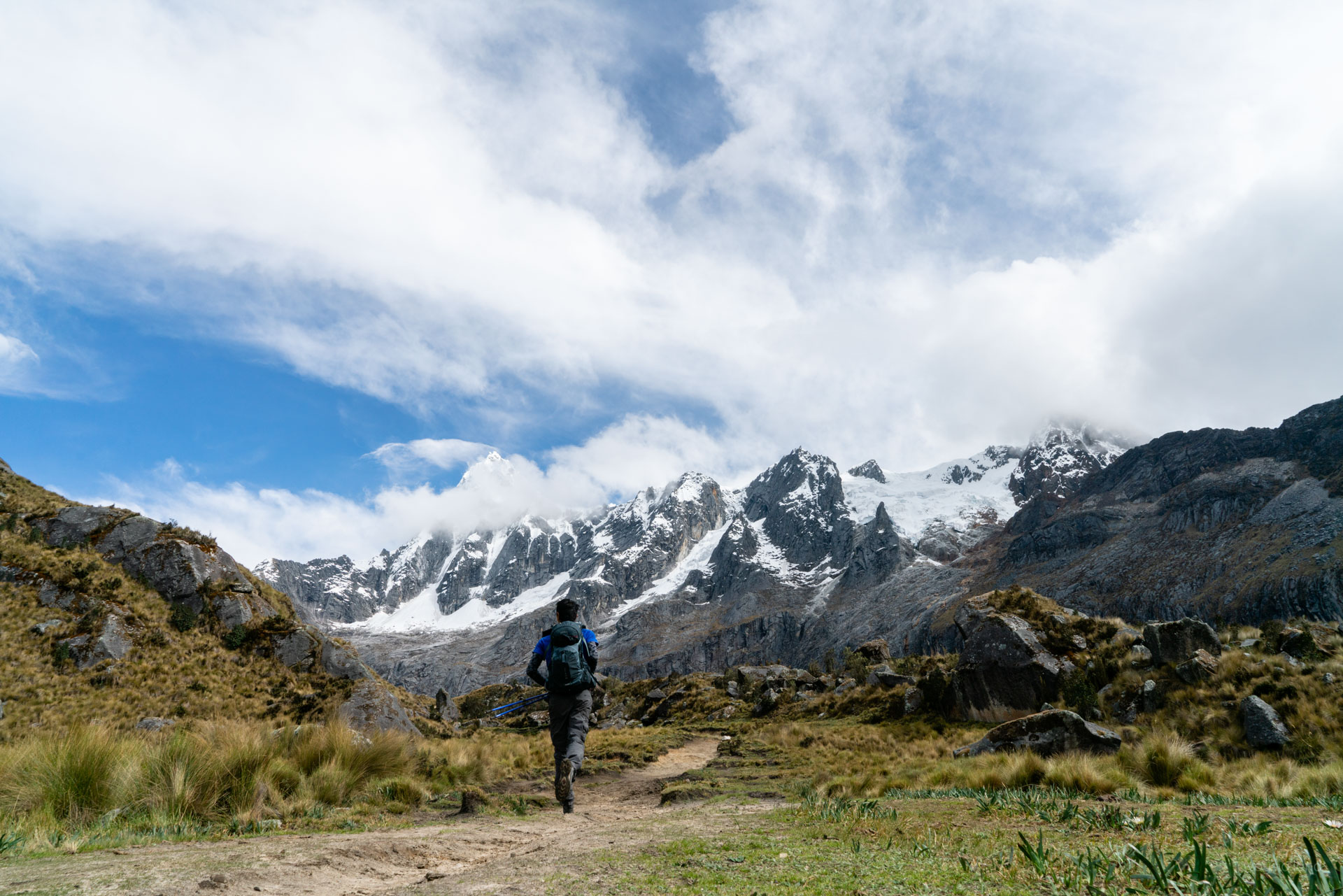Switching to Light or Ultralight Hiking
10 top tips for switching to light or ultralight hiking
It’s an inevitable thought. When you’re on a hike or trek what must go through everyone’s mind is the thought: “imagine how much easier this would be if my pack were lighter.”
And here you are looking for tips on how to do just that.
Whether you want to lighten your pack or simply lighten it to pack it full of other things you want, such as more camera gear, here are my top tips to help you shave precious kgs off your pack weight. Enjoy trekking more.
To help keep this blog alive, all product links below link to the product on Amazon for which I may receive compensation.
Tip 1 – expect to pay to go ultralight
Research and development in hiking gear is headed in one direction – that is to make gear lighter without sacrificing durability and functionality. Asides from the R&D costs, lighter and more durable materials are typically proprietary (e.g. Dyneema vs nylon). Combine that with already expensive materials such as carbon fiber and titanium, paying up to 2-3x more for a light version of whatever it is you want is not uncommon.
Of course, you don’t have to upgrade everything and you can do it over time to spread out the costs.
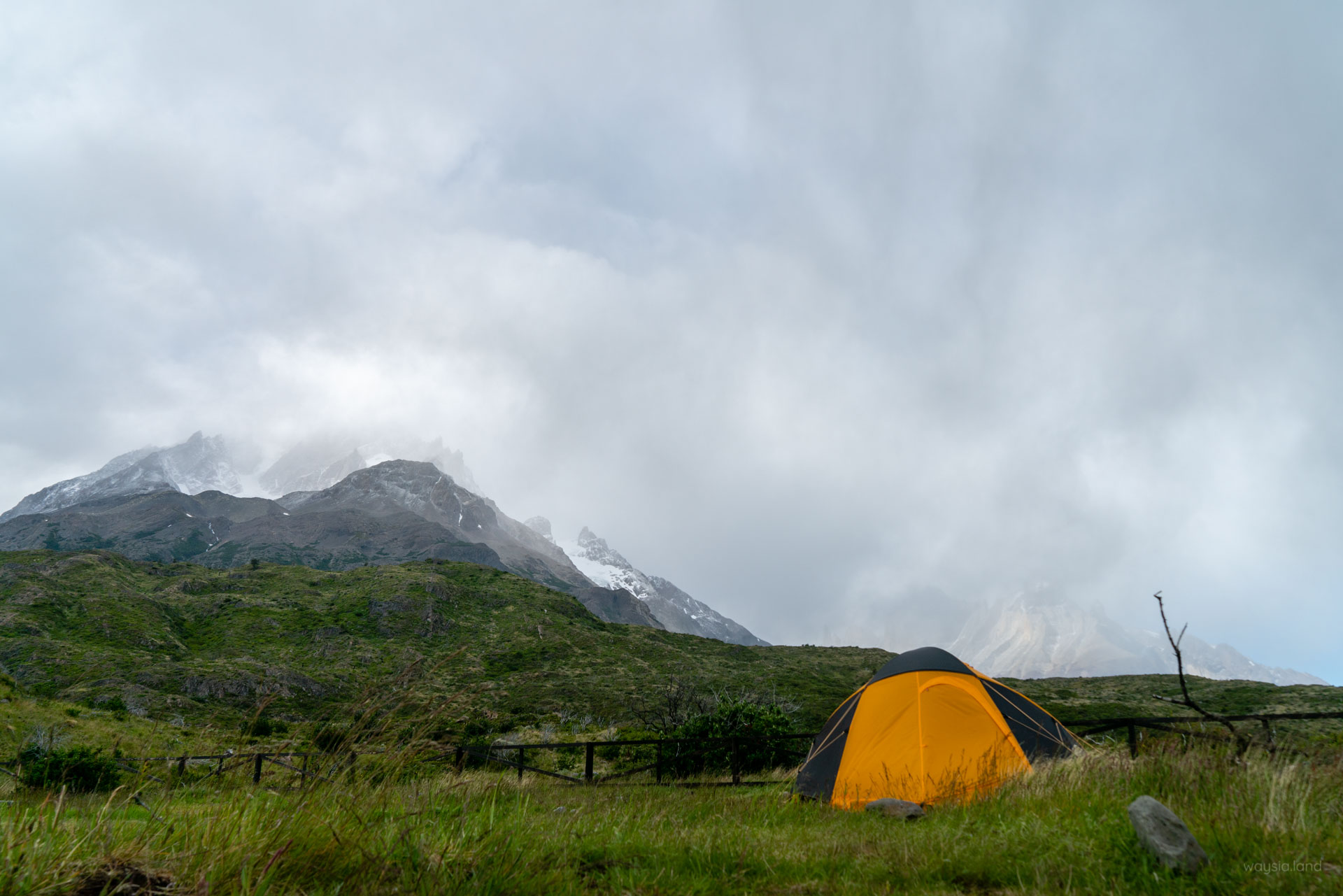
Tip 2 – lighten your pack with the big 3
That is: tent, backpack and sleeping bag + sleeping pad. These items are by far the heaviest things in your pack where you can get some huge weight savings. You can probably save 1-2 kgs on each of these items for a whopping 3-6 kgs total.
A lightweight 2-person 3-season tent can come in at around 1.1kg – 1.3kg such as the highly popular US$450 Big Agnes Copper Spur. A non-lightweight tent can be 2-3kg or more. An ultra-lightweight is an astounding 0.6kg!!! These ultra-lightweights such as the US$1000 Big Agnes Tiger Wall Carbon are designed for highly experienced trekkers (who influence the rest of the hiking community). It just goes to show you what kind of numbers can be achieved by dropping some cash.
Regarding a backpack, there are 2 ways to reduce weight. Use a smaller one, or use one with a lighter weight. To use a smaller one means you have to pack less things. The rest of this guide will have tips on doing just that. Using a lighter-weight backpack can be a blessing or a curse. It’s not all about the weight of the backpack which can be tempting to use as a sole metric for what’s best. Weight distribution and rigidity are very important too, something which a heavier pack can do more easily (heavier due to reinforcements, padding, etc). For example, putting 20kg into an ultra-lightweight 0.8kg backpack is probably bad news, whereas doing the same for a 2.3kg backpack will probably make your pack feel lighter than the ultra-light example. So keep in mind recommended contents weight limits when shopping for a backpack and if you do buy an ultra-lightweight backpack, you probably have to buy lightweight-everything else to get the most out of it.
A lightweight sleeping bag such as the Sea to Summit Spark III range can be 0.6kg, which is filled with down. Compare that to the 3x cheaper synthetic filled Trailhead series which weighs in at just over 2x the Spark.
A lightweight sleeping pad is one that can be blown up and made of thin material. So not only is it lightweight, it packs SIGNIFICANTLY smaller. These can clock in at about 0.17kg to 0.35kg vs 0.4 to 0.5kg for heavier inflatable versions or foam pads. Foam pads are heavier, more resilient and bulkier but people tend to strap them to the outside of the backpack. With an inflatable one, you need to pack it inside your backpack to prevent puncture and make sure it’s not set up on ground that will also pierce it. I use the Thermarest Neoair Xlite Regular which has great insulation and is very nice for side sleepers as well as back sleepers.
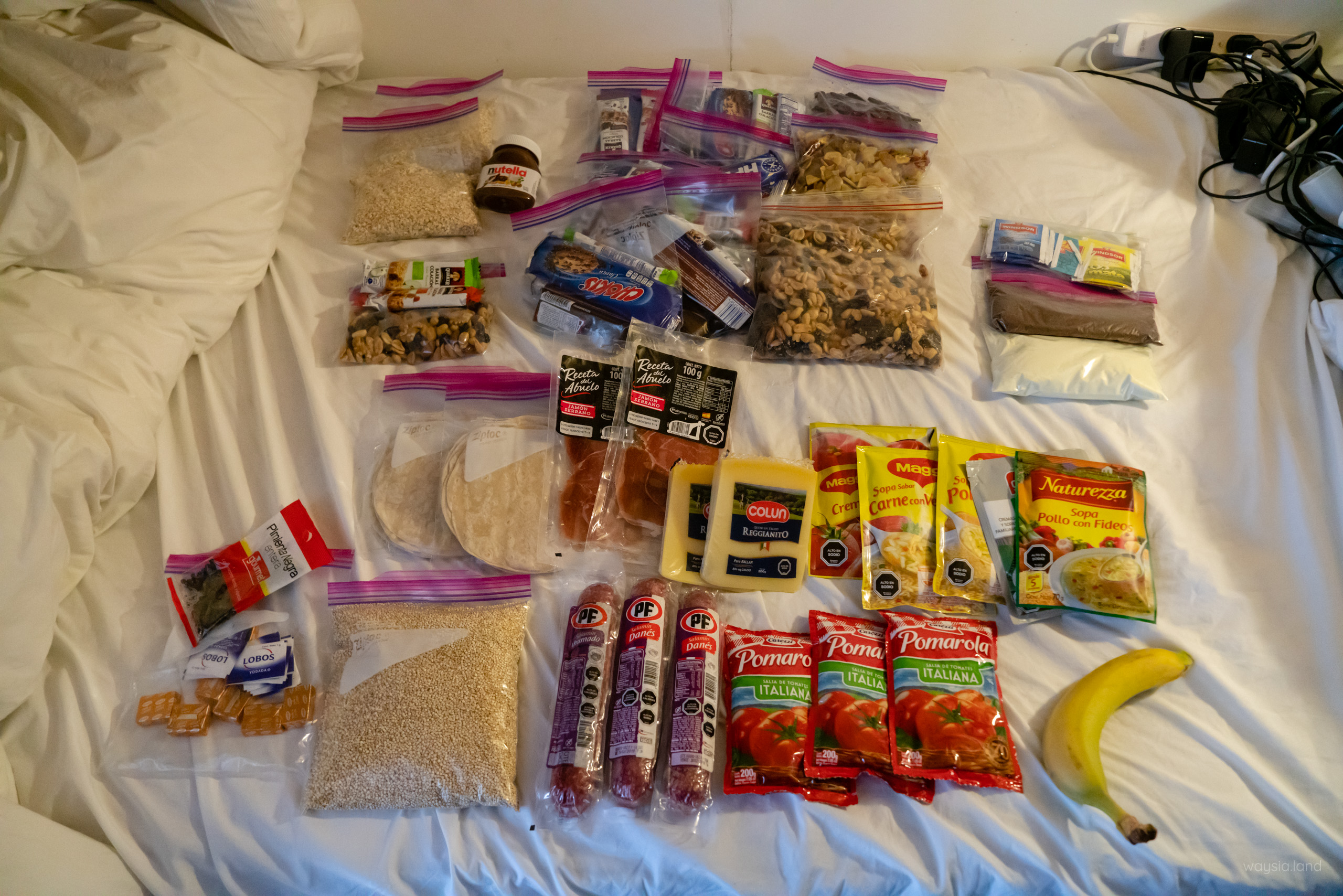
Tip 3 – lighten your cooking, food and packaging
How much food you need comes with experience. Once you have an idea of how much you need to eat per day of hiking or trekking, you can get that intake of calories more efficiently in terms of space. This includes doing things like dehydrating or buying your own dehydrated food and packing densely packed nutritious foods such as nuts. While luxuries are nice to have on a hike, they can unnecessarily add to weight and bulk. Tough it out and celebrate back in town.
Regarding cooking, the biggest savings come from using a small stove like the tiny MSR Pocket Rocket 2 and using titanium cookware. Titanium cookware is super durable and can be 1/3rd of the weight of stainless steel but can come at a premium. Plastic utensils are cheap and light but will break eventually. Browse titanium campware on Amazon.
Not taking spare containers and eating straight from the pot is another space and weight saver.
Store packaging should be removed where possible and all food should be portioned and in more appropriate containers like ziplock bags. Many of these are reusable so it’s not as bad for the environment as you think. Further, it beats wanting to dump store packaging due to its mess, whether bins at campsites are provided or not. Store packaging can add some weight but more importantly, it can add a lot of bulk and mess you simply don’t need. It also makes your life so much easier when looking for something to eat.
Tip 4 – remove unnecessary clothing
For health and safety reasons you should always carry appropriate clothing and enough warmth for the trek or hike you’re doing. Dressing in layers allows you to achieve this efficiently as you can attain your desired warmth by simply putting on another layer or taking one off. Once you have your layered setup, you may be tempted to bring more of the layers closer to your skin such as underwear, thermals, socks and t-shirts.
How many you actually need is far less than what you would normally do at home in a non-hiking scenario. For example, at home, you would probably change clothes daily and may wear something like jeans for a few days before washing them. On a trek, daily change of clothes is just extra weight you have to carry, not to mention a huge eater of precious space. While some spares might be wise, especially a second pair of socks, you can probably get by with less. Sometimes I’ve taken 2 pairs of top thermals (1 for day, 1 for night) but even that seemed excessive. In cooler weather, it’s easier to get by with less change of clothing and that’s something you can plan around. Sleeping in some or all your hiking gear can be common which saves on having to bring separate sleepwear.
Before you think “that’s gross” read my next tip…
Tip 5 – use wool and synthetic clothing so your total amount of clothes are lighter
Body odours are usually caused by bacteria on the surface of your skin being exposed to certain things such as sweat and moisture. Wool has antibacterial properties, antismell and great thermal properties. Needless to say but wool hiking clothing is some of the most expensive you can get. You can typically buy a variety of things in wool from thermals to socks, underwear, gloves, and mid-layers. If you’re out shopping for wool, keep in mind there are wool blends that are not 100% wool. e.g. 20% wool 80% polyester (synthetic). Think of these as a midrange product positioned between polyester and wool. Check out Merino wool products on Amazon.
Synthetic polyester outdoor and fitness gear is designed to dry extremely fast. Not only is being dryer more comfortable, the drier you are the less of a breeding ground for odour producing bacteria you are. T-shirts can usually be picked up for very cheap ($10) from the sports section of almost any decent department store but thermals will be more costly and are best bought in outdoor stores (cheaper than wool).
So wait, how does this help me lighten my pack?
This allows you to carry fewer clothes and have them last more than a single day of wear WITHOUT smelling bad. Less spare clothes mean less bulk and less weight. I’ve had some clothes last 4 whole days albeit in cooler weather. Some hardcore trekkers turn their socks and underwear inside out to get to the “clean” side but that’s just disgusting and I seriously doubt there is a “clean” side if it becomes dirty enough to warrant turning inside out in the first place.
Tip 6 – use lighter duck or goose down (feathers) instead of synthetic fibres
The stuffing of puffer jackets, vests, and sleeping bags can come with synthetic stuffing or goose/duck down, sort of like your pillow at home. Synthetic dries significantly faster but is far bulkier and heavier for an equivalent level of warmth. Down is lighter and used in most lightweight versions of these items. Surprise surprise, this is also the more expensive option.
Take note of what you’re buying though. Often a down item can be filled with cheaper feathers or synthetic fibres rather than actual down. For example 10% down 90% feathers vs 100% down. A 10% down puffer could be advertised as “Duck down puffer”. Be sure to check the composition which all good brands and websites should show. If it doesn’t say, assume it’s not 100% down. It can also get a bit muddier since not all down jackets have the same amount of down in them. Again, good brands and websites will typically say how much the “fill” (i.e. stuffing) weighs.
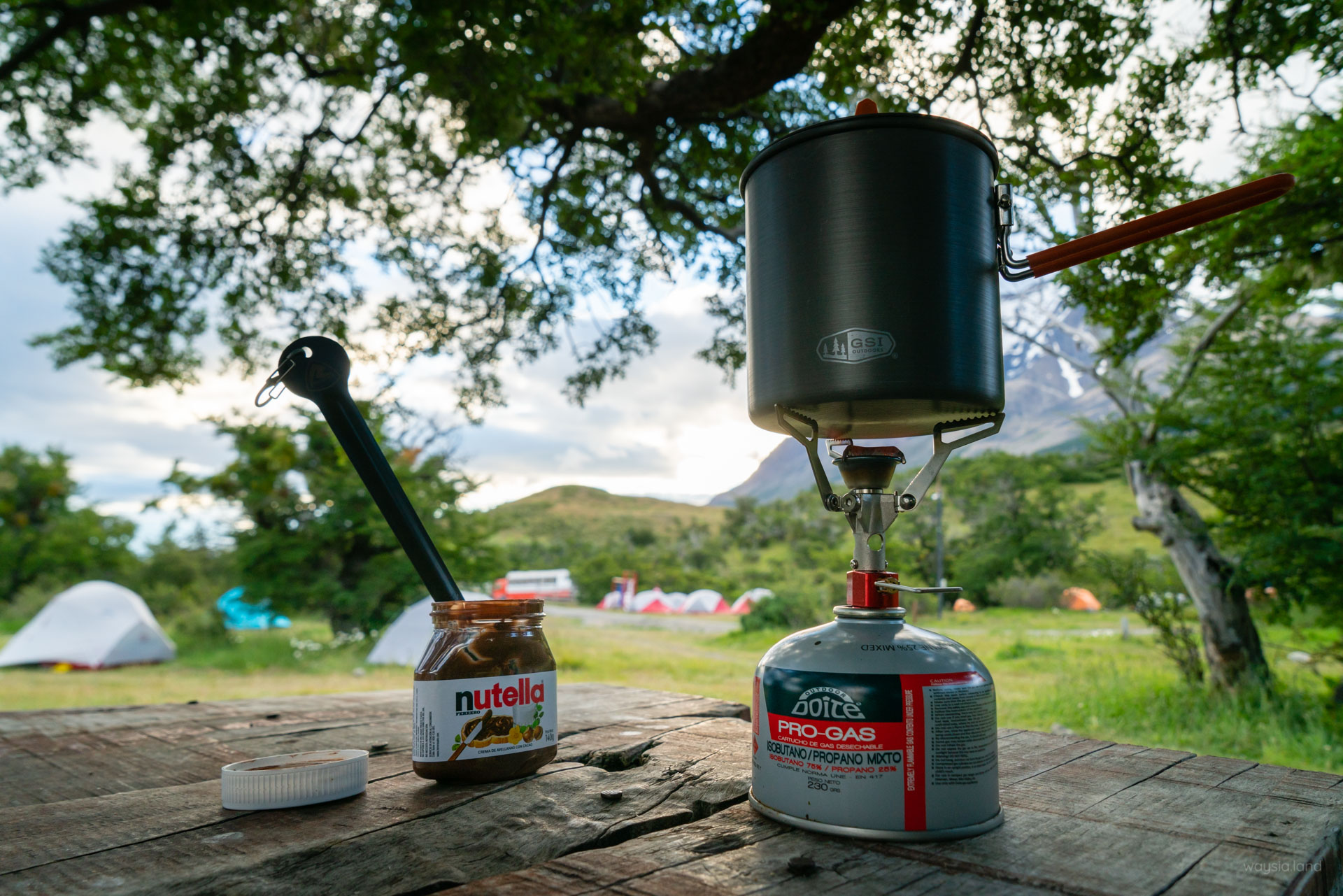
Tip 7 – get lighter by losing the things you thought you needed but don’t
Initially, I carried a multitool on some hikes and treks. You might think it’s a really versatile tool but how many of it’s features do you actually need? By far the most is the knife, but it’s going to be a small knife at that. 90% of hikes and treks you probably won’t take out any of the other tools. These days I carry a lighter more solid knife and leave the multitool at home.
Spare torch. For most people, you’re going to be hiking during the day and spend nights at camp. So when using a torch, it’s not going to be for hiking 99% of the time. So should you carry a spare torch for when your main headlamp breaks? Unless you are specifically planning on night hiking, I don’t think so. If you only need it for campsites, you can probably get by using your phone’s light as a backup.
Full on medkit. Bringing a medkit is wise, but bringing one too big can be a waste of space. The vast majority of injuries are probably going to be grazes and cuts. Bring whatever essentials you need and don’t go overboard on the “what if”.
Speaking of what-ifs, I saw a guy carry an ice pick when 99% of others didn’t – it wasn’t necessary!
Being from Australia and hiking internationally, things like bringing a gun for protection against bears and people are unheard of. But apparently, it’s a thing for U.S.A. hikers. I obviously don’t have personal experience with this but according to Homemade Wanderlust, it’s unnecessary. Personally, I would invest in self-defense classes which you can bring anywhere.
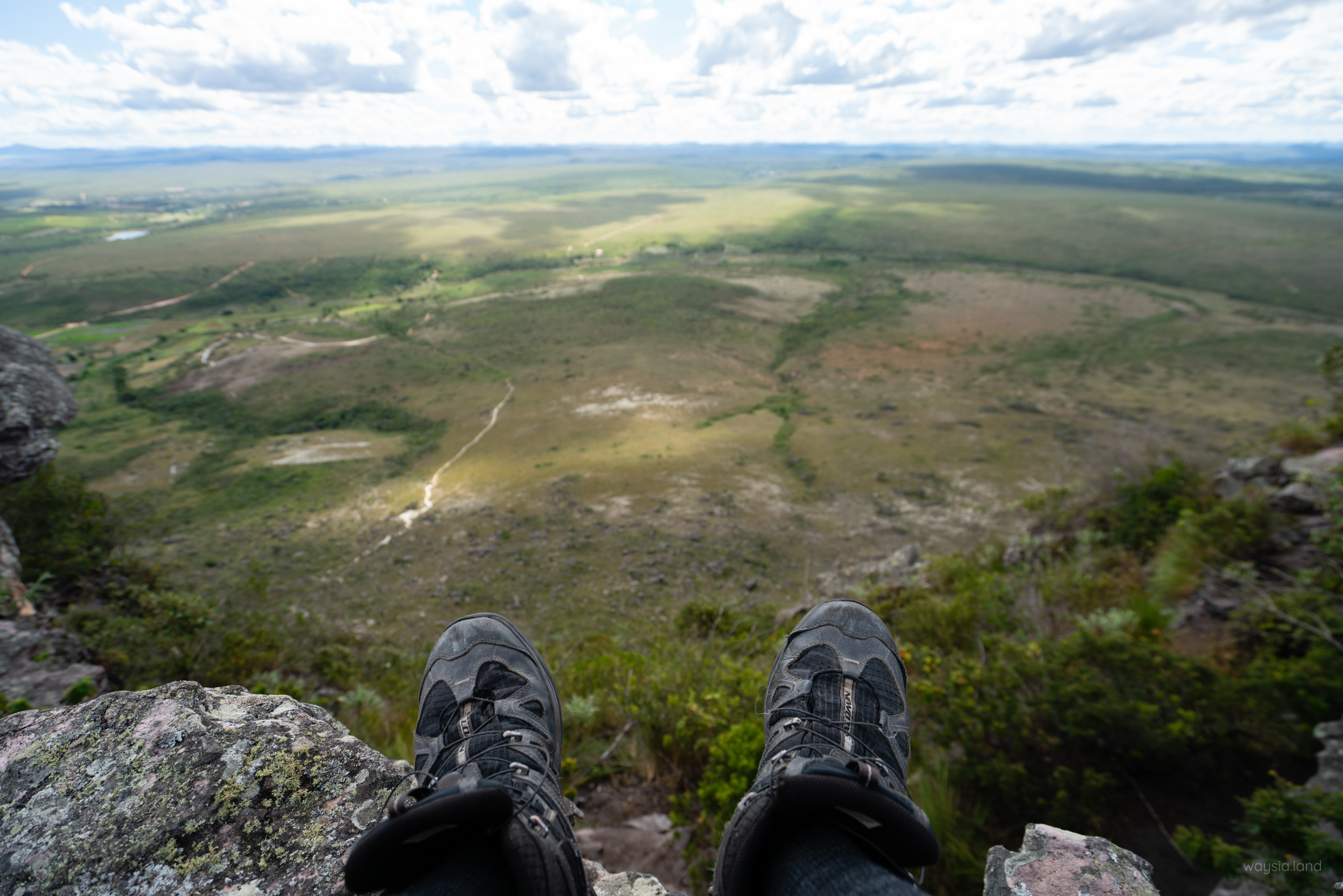
Tip 8 – lighten your shoes/boots
Sometimes there is nothing like a good stable hiking boot but it comes at the cost of size, mobility, and weight on your feet. Atm I personally use a mid-cut Scarpa boot (not pictured above) for its balance of weight and support in any season. This weighs roughly 1.1kg for the pair.
However, it’s widely accepted that removing 0.5kg of weight from your shoes/boots is like removing 2.5kg of weight from your back. So while you don’t actually make your pack lighter, the effective weight on your legs/feet can produce some considerable savings you didn’t even know were possible – each step is lighter and easier. For reference, full boots can be 1.5kg for the pair and trail runners 0.6kg for the pair.
Maybe you want to keep your boots for more treacherous terrain and weather conditions but when you don’t need them, hiking shoes/trail runners may be a good option for you. Keep in mind their durability is a lot less than boots.
Alternatively simply switching from a leather boot to synthetic booth may lighten your feet but at reduced durability.
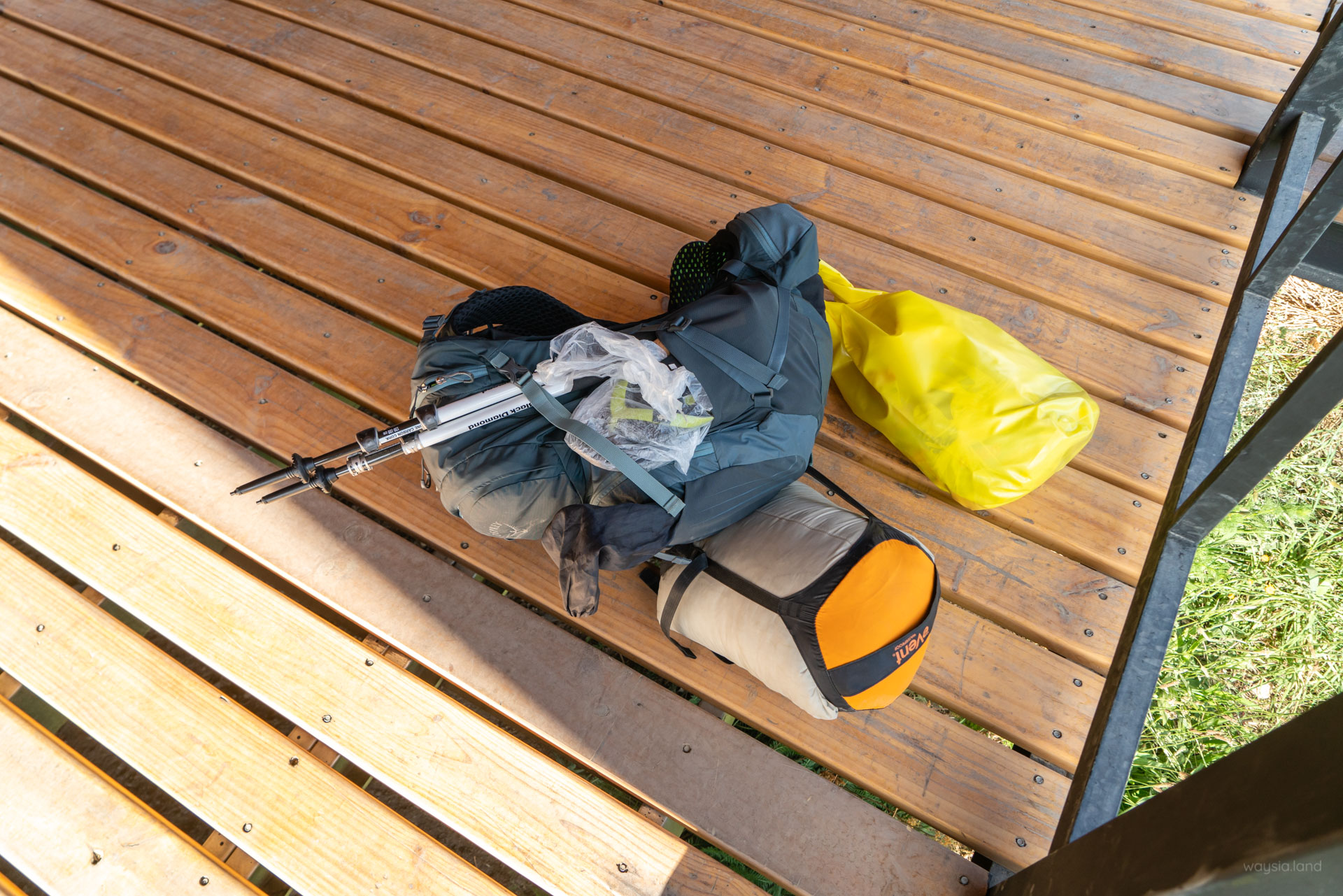
Tip 9 – balance better for more lightness
We’ve all been there. Carrying something relatively lightweight but it has some obnoxious shape that it makes it very hard to carry, making it seem heavier than it actually is.
Use the same concept to your advantage. Pack heavier items at the bottom of your pack to keep your center of gravity low. This will make it far easier to carry making your pack seem lighter than it is (I learned the hard backbreaking way).
Similarly, if you can, clip something to the front of your backpack. With all the weight on your back, having more weight on the front serves to balance your whole body, again making it feel lighter.
If you’ve done some of the other tips, the bulkiness would also be reduced further helping the balance.
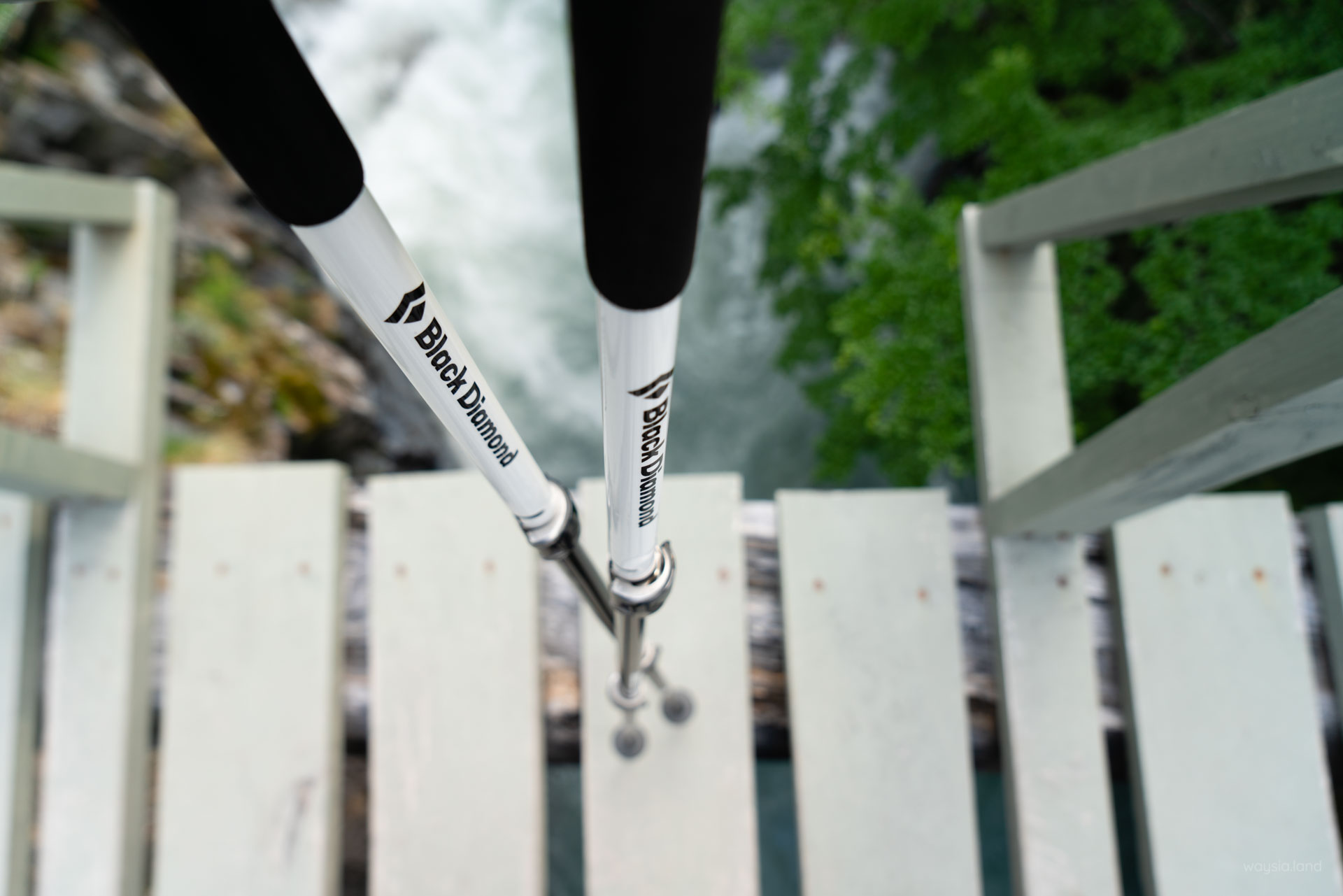
Tip 10 – upgrade to lightweight poles
Cheaper trekking poles are made of aluminium. While aluminium is sort of lightweight, it’s not nearly as light nor as durable as carbon fiber trekking poles. I’ve previously used aluminium – I actually slipped and fell then tried to use my aluminium pole to brace myself but it snapped. Now I personally use the Black Diamond Alpine Carbon Cork which is made of carbon fiber. It’s hands down one of the best trekking poles being durable, lightweight, and adjustable. The cork handles are probably the worst thing wearing over time but people coat it to prevent that from happening.
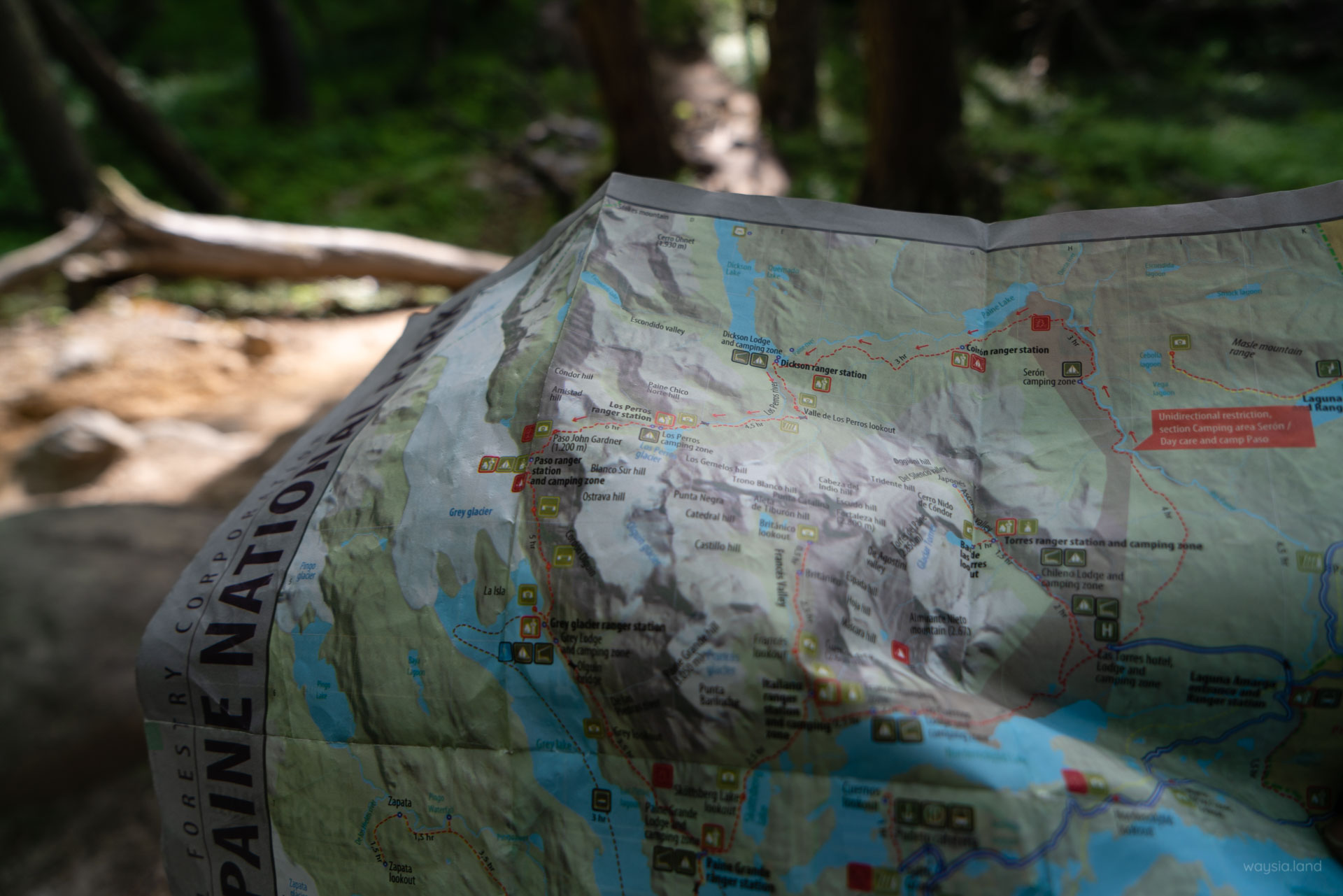
Tip 11 – keep your essentials – don’t sacrifice them for weight savings
Last but not least, it goes without saying, where you trim your weight, should be from things that are not essential to your survival.
